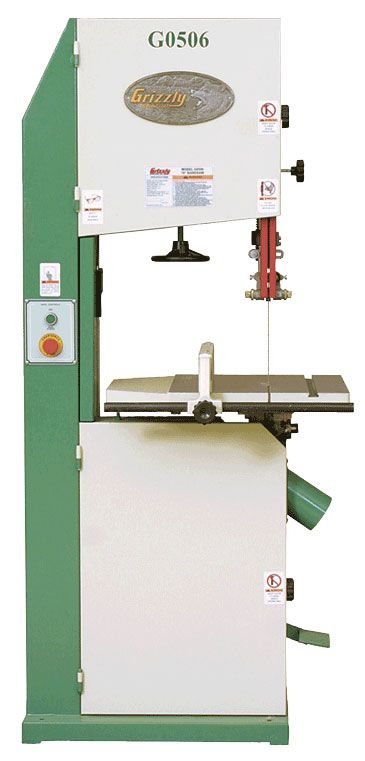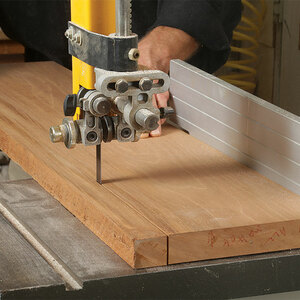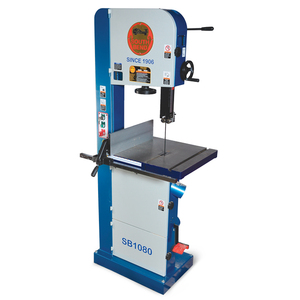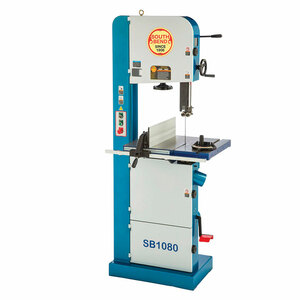Grizzly Industrial - 18-in. Bandsaw G0506
Grizzley’s 18-in. bandsaw features a solid welded-steel frame and cast-iron table, with a rack-and-pinion blade guide adjustment.
If you cut a lot of thick stock, or if you resaw stock in the 9-in.-wide to 12-in.-wide range, an 18-in. bandsaw is worth considering. Not only does it offer extra capacity, but most 18-in. saws also have more horsepower to cut faster. I looked at 11 models ranging in price from $900 to almost $3,000, evaluating cutting ability, machine sturdiness, and blade-changing ease. The Grizzly showed acceptable results in the resaw test, did well in the curve-cutting test, and ranked second in the frame-deflection test. The cast-iron trunnion support and trunnions are a plus. The fence is not adjustable for drift or squareness to the table, and the fussy-to-adjust guides made blade changing a chore.
Fine Woodworking Recommended Products

Rockler Dust Right 650 CFM

Freud Super Dado Saw Blade Set 8" x 5/8" Bore

Hedgehog featherboards























Log in or create an account to post a comment.
Sign up Log in